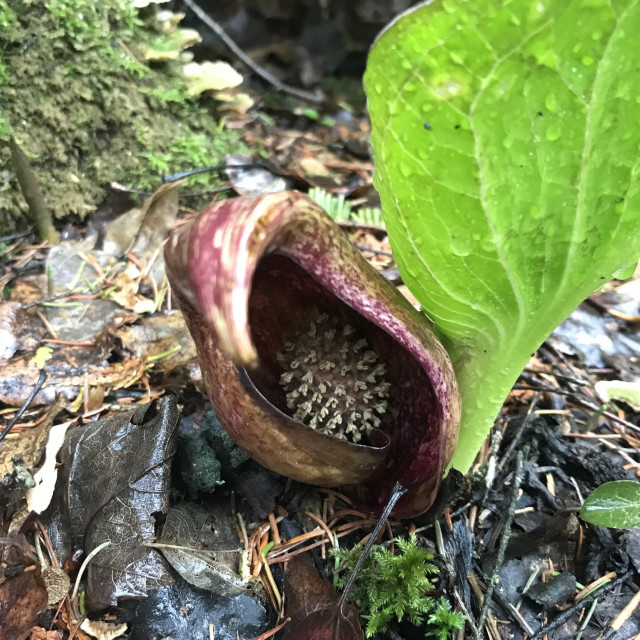COMMON NAME
Skunk cabbage
SCIENTIFIC NAME
Symplocarpus foetidus
Plant family
Arum (Araceae)
Plant group
Wildflowers and Herbs
A low-growing wetland plant reaching just 1-3' tall. The flower emerges first, followed by the large leaves. The stems remain buried in the soil.
295 reports
77+
OBSERVERS
295+
OBSERVATIONS
Identification hints
This is usually the first flower to bloom in late winter or early spring, often found in a ring of melted snow-- a chemical process allows these plants to heat themselves up and melt the snow around them when they're ready to bloom.
Did you know?
The skunk cabbage gets its name from the foul odor produced by the leaves when crushed.
DISTRIBUTION IN TH U.S.
Connecticut
,
District of Columbia
,
Delaware
,
Iowa
,
Illinois
,
Indiana
,
Massachusetts
,
Maryland
,
Maine
,
Michigan
,
Minnesota
,
North Carolina
,
New Hampshire
,
New Jersey
,
New York
,
Ohio
,
Pennsylvania
,
Rhode Island
,
Tennessee
,
Virginia
,
Vermont
,
Wisconsin
,
West Virginia
HABITAT
Growing in swamps and rich muddy soils
ATTRIBUTES
Leaves
Leaves are 16-22" long and 12-16" wide, bright green with a somewhat waxy appearance and prominent venation. The leaves emerge from the soil, without an above ground stem.
Flowers
A 4-6" mottled brown-red sheath (spathe) covers a yellow knob-like cluster of tiny flowers (spadix) inside. These flowers emerge from the soil before the leaves.
Fruits
Fruit is a geometrically patterned sphere, 2" in diameter and containing several spongy berry-like fleshy fruits, each with a single seed.
Bloom Time
These wetlands plants bloom in late winter to early spring.
See Menu
- 2021 Chicago Botanic Garden. All Rights Reserved.
-
Creative Commons
BY-NC-SA 4.0 - Terms of Use
- Privacy Policy
- Data Sharing and Citation Policies
- 2021 Chicago Botanic Garden. All Rights Reserved.



